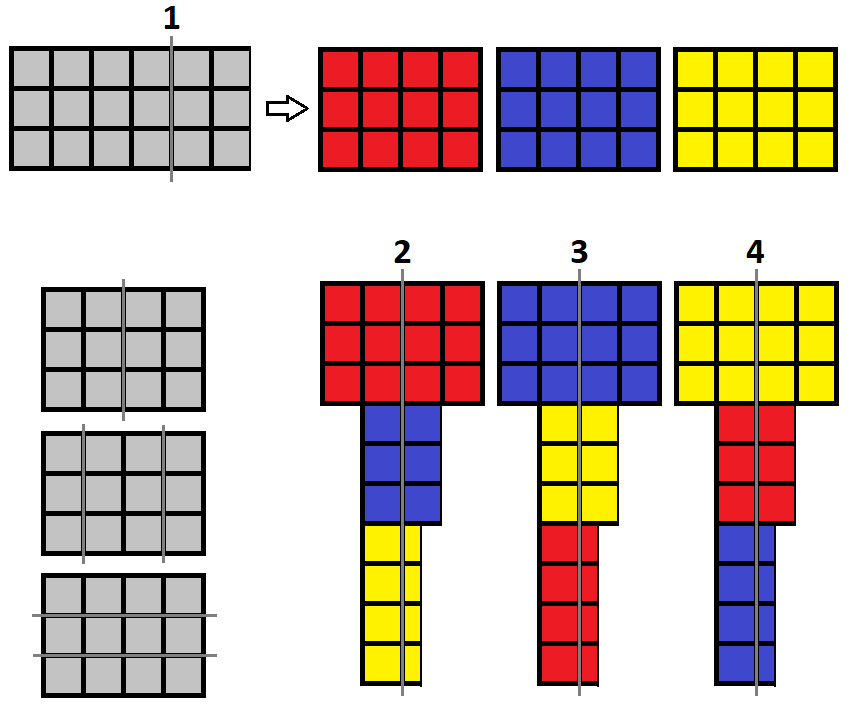The puzzle is as follows:
Mike has a thin sheet of cardboard which is 96 centimeters large by 24 centimeters wide and a guillotine whose maximum cut length is 80 cm. Assuming this guillotine can cut a maximum of two layers of such cardboard. What is the minimum cuts he can make in order to get from that sheet 36 squares whose sides are of 8 centimeters?
The alternatives given are as follows:
- 3 cuts
- 5 cuts
- 4 cuts
- 2 cuts
I'm not sure how to get the optimal number of cuts. Does a way to find the optimization exist? So far I'm getting more than 6 cuts. My approach is to cut the bigger chunk of the cardboard in two pieces of 48 cm with hopes of getting a 6 by 6 squares, but from then on I got stuck.
Does a general guideline on how to solve this kind of puzzle exist?
This seems to be a modification from the usual problem which does not allow bending of the material to be cut.
This seems to be an adaptation from a reprinted copy of the 1970s edition of Martin Gardner's Puzzle Carnival found in a collection of riddles in Logical challenges.
Initially I thought that an approach would use the least common factor but upon looking at this puzzle it seems that is not the case. Since I'm not good with visualization of cuts, it would help a lot if the answer would include some sort of drawing or sketch on where should those cuts be made.

